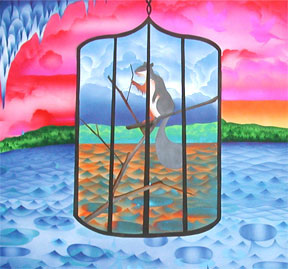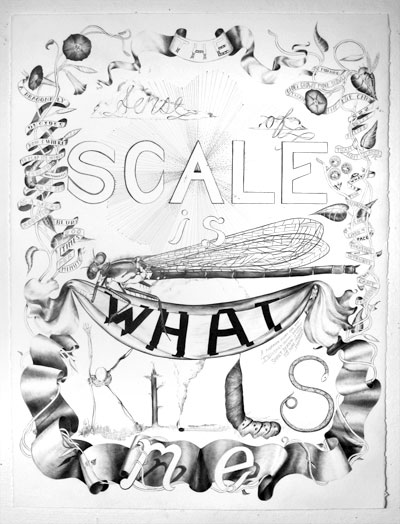
You can see the piece larger on my website here, and if you scroll down on that page it will take you through some details that show more of the text, which can get pretty tiny.
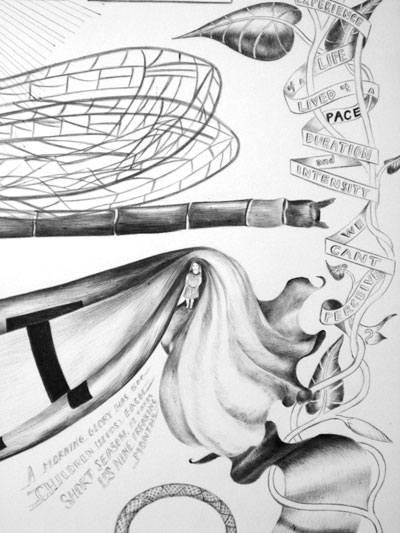
The little person in the banner is a self portrait.
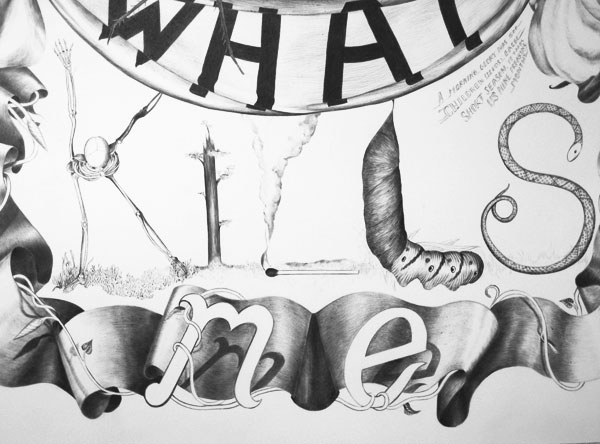
The leaning skeleton and the following images function as letters. I'm hoping people get it. (Do you get it? Can you read the word between "what" and "me"?)
While I was trying to find reference material for this piece I came across lots of interesting odds and ends that I didn't use in the text of the piece.
I learned a great deal about dragonfly eyes. They're amazing. The most complicated eyes in the world, apparently, and they give the insects nearly 360 degree vision. They're also very beautiful.
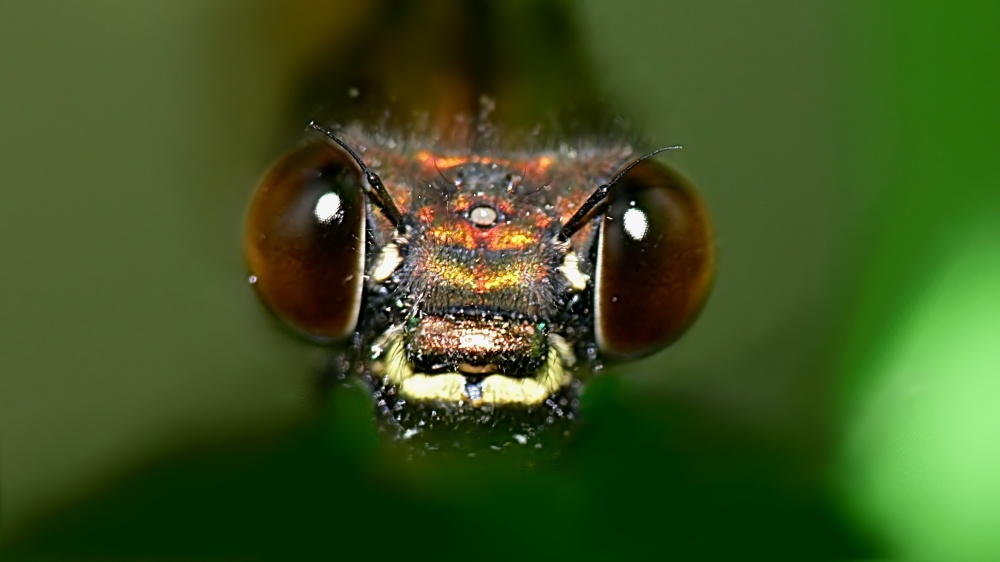
This is the "Female Beautiful Demoiselle" (aka Calopteryx virgo) from the Dragons and Damsels blog . (You can see more here.) I love that blog, and am excited every time there's a new post. I got the reference image for the giant dragonfly image from that site.
I learned about the dragonfly eyes from a very long winded website that turned out to be devoted to the idea that dragonflies, because they are so amazing, are living arguments for creationism.
They are pretty fabulous. They can fly 65 mph and stop on a dime, they move in a peculiarly efficient fashion, and they've been around for thousands of years. Evolution, according to that site, was just not up to the dragonfly. (Although the military, according to the same site, was. Apparently helicopters are based on dragonfly flight research.)
I also wanted to get some morning glory facts. I remembered reading somewhere that Charles Darwin had observed the twining of a morning glory from his sickbed, and while I was trying to find that reference I came across some work he did on self-fertilized morning glories. Most of his self-fertilized morning glory plants failed, but one, which was a sixth generation plant, grew taller than the others and produced strong, tough offspring. He named it "Hero" and referred to it as such in the transcripts of his work.
I never did find the sickbed reference, but I remember that Darwin and his son timed the average time it takes a morning glory to rotate around a support. It's fast. Morning glories grow outside my studio window and I often watch them move while I'm working. The tops of the plants are like little snake heads that twirl around until they reach a support that will sustain them.

If one sits in one place long enough to watch one twine around a support one gets the idea that the plant is making choices. They do seem to try to avoid twining around their own vines, and they always turn clockwise, which can give a group of them the air of all looking at the same thing at the same time. They seem, as I wrote in the piece, to be moving just slowly enough that one could catch them at it.
Here's how that thought looked in the piece.
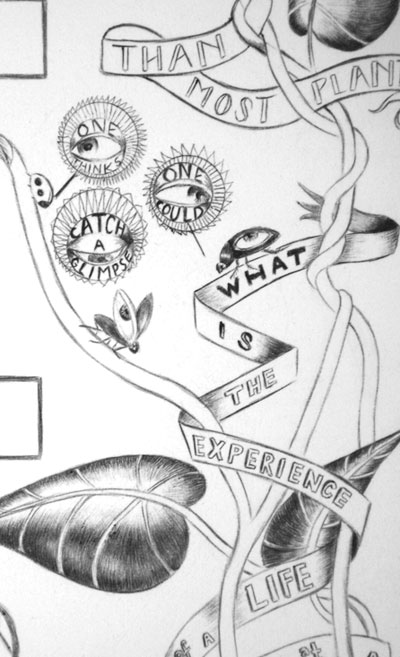
Notice the bug eyes.
